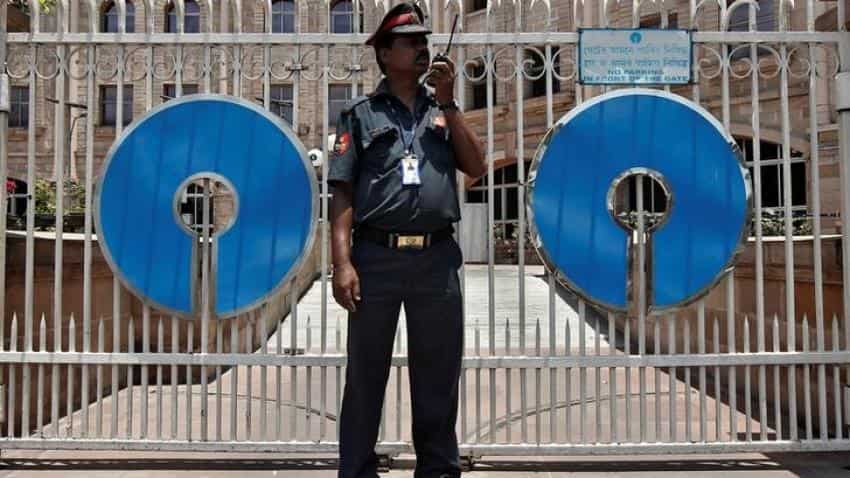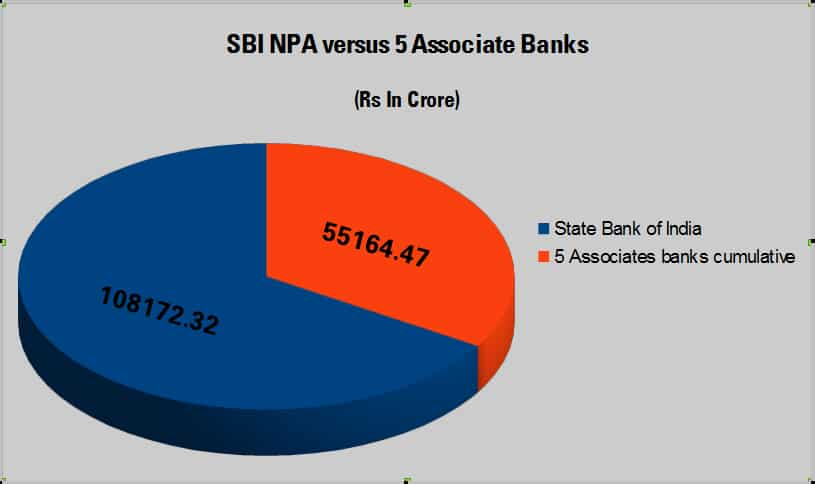Mega merger: Bad loans of 5 associate banks more than half of SBI's
The combined gross non-performing assets (GNPAs) of all the five associates is over half of SBI's.

State Bank of India (SBI) has begun merging its five associates banks besides Bhartiya Mahila Bank (BMB) with itself.
These five associate banks are State Bank of Bikaner & Jaipur, State Bank of Hyderabad, State Bank of Mysore, State Bank of Patiala, State Bank of Travancore.
With this merger, SBI has joined the league of top 50 banks globally in terms of assets. The total customer base of the bank will reach 37 crore with a branch network of around 24,000 and nearly 59,000 ATMs across the country, the bank said in a release.
Arundhati Bhattacharya, Chairperson, SBI, at a press meet had said that this "mega merger" will be completed by May 27, 2017.
Bhattacharya said, “The merger process of SBI with its associate banks and Bhartiya Mahila Bank (BMB) will commence from April 24, 2017. From this day, every week one bank will be merged with SBI and by May 27, 2017, we expect the entire data merger.”
Before this merger process starts, here's a look at the balance sheet of these associate banks as compared to SBI.
The combined gross non-performing assets (GNPAs) of all the five associates is over half of SBI's.

Till the third quarter of financial year 2016-17, gross NPAs of SBI stood at Rs 1,08,172.32 crore. The total of bad loans till December 31, 2016 of five associate banks stood at Rs 55,164.47 crore.

Gross NPAs of State Bank of Hyderabad was highest at Rs 16, 308.37 crore followed by State Bank of Patiala, whose bad loan book was at Rs 15,018.61 crore. Third in the list is State Bank of Travancore with Rs 8169.97 crore. State Bank of Bikaner and Jaipur (Rs 7917.35 crore) and last State Bank of Mysore (Rs 7750.17 crore).

In a report on SBI merger, ICRA had said that in the short run, there are likely to be issues regarding post employment liabilities and alignment of asset classification with associate banks.
Moreover, in February, Bhattacharya at a press meet had said that SBI is expecting its Gross NPAs to rise from 7.23% at present to 8.7% post the merger of its five associates banks into itself, even as it strives to align the smaller banks’ provisioning for bad loans with its own.
Later, on April 3, Bhattacharya, said that the bank does not expect any "nasty surprises" on bad loans after merging five subsidiary banks with itself at the weekend in a deal that will help it save costs and gain scale.
Bad loan in public sector banks vs SBI
Minister of State for Finance Santosh Gangwar in a written reply to the Rajya Sabha, said that bad loans of public sector banks rose by over Rs 1 lakh crore during April-December period of 2016-17, the bulk of which came from power, steel, road infrastructure and textiles sectors.
Public sector banks' gross bad loans stood at Rs 5,02,068 crore at the end of 2015-16. Bad loans rose by over Rs 1 lakh crore in the first nine months of fiscal FY17 to Rs 6,06,911 crore by December 31, 2016.
Motilal Oswal said, "SBI is relatively well placed in case of consolidation in PSBs as it would only be absorbing its associate banks without much change in its technological platform, work culture and asset recognition policies. Management remains optimistic about the merger and related synergies. In our view, the biggest risk from the merger with associate banks is the integration of 70k+ employees."
(Contributed by Pooja Jaiswar, Correspondent of Zeebiz)
Get Latest Business News, Stock Market Updates and Videos; Check your tax outgo through Income Tax Calculator and save money through our Personal Finance coverage. Check Business Breaking News Live on Zee Business Twitter and Facebook. Subscribe on YouTube.
RECOMMENDED STORIES

Rs 3,500 Monthly SIP for 35 years vs Rs 35,000 Monthly SIP for 16 Years: Which can give you higher corpus in long term? See calculations

Small SIP, Big Impact: Rs 1,111 monthly SIP for 40 years, Rs 11,111 for 20 years or Rs 22,222 for 10 years, which do you think works best?
05:05 PM IST









 Rama Mohan Rao Amara becomes SBI managing director
Rama Mohan Rao Amara becomes SBI managing director India's GDP expected to fall below 6.5% in FY25 amid slowdown in GDP growth in second quarter: SBI
India's GDP expected to fall below 6.5% in FY25 amid slowdown in GDP growth in second quarter: SBI SBI Funds Management Limited appoints Nand Kishore as Managing Director and Chief Executive Officer
SBI Funds Management Limited appoints Nand Kishore as Managing Director and Chief Executive Officer SBI to open 500 more branches in FY25, take overall network to 23,000: Finance Minister
SBI to open 500 more branches in FY25, take overall network to 23,000: Finance Minister Attention SBI Customers: EMIs of home loan, personal loan go up as PSU bank hikes lending rate
Attention SBI Customers: EMIs of home loan, personal loan go up as PSU bank hikes lending rate